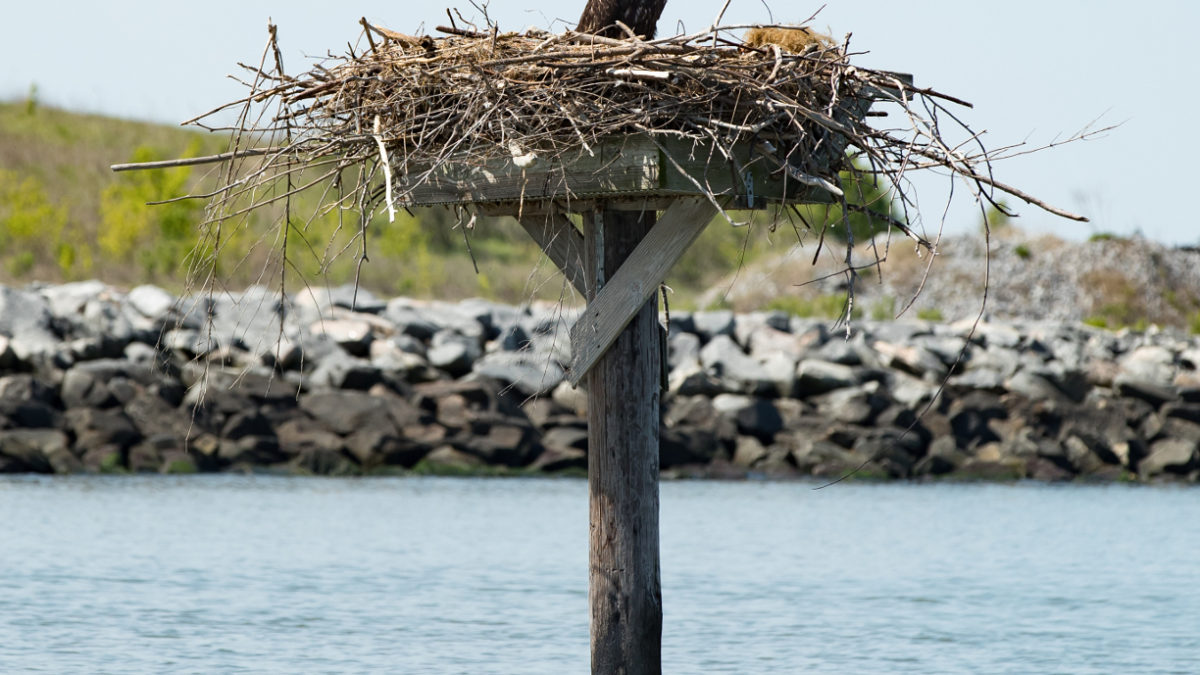Platform use by nesting eagles

Virginia woodpeckers have record production
July 6, 2020
The joy of birds
July 6, 2020By: Bryan Watts
7/6/2020
As with the other sea eagles, bald eagles are tree nesters. Here in the Chesapeake Bay region eagles nest in loblolly pines on the outer coast and along brackish waters. However, within the upper reaches where pine forests are replaced by hardwood forests they use a wide variety of hardwood species. Not until the 1990s did we begin to see eagles move out of the trees and adopt artificial structures for nesting within the Bay.
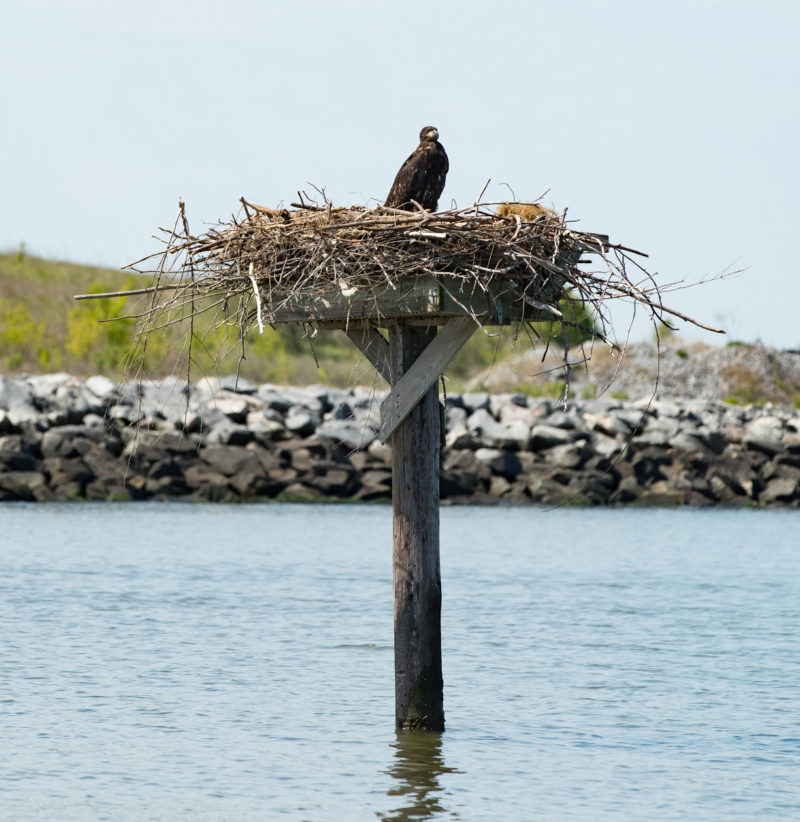
We first began to document pairs nesting on electrical transmission towers. Tower nests were constructed mostly around power plants on the Susquehanna, Potomac, and James rivers where transmission towers were concentrated. Since that time, the practice has spread and we now have dozens of nests on these structures throughout the region. We have documented seven tower nests just along the lower Susquehanna. Shortly after their appearance on transmission towers, eagles began nesting on other high towers such as water towers and military observation towers.
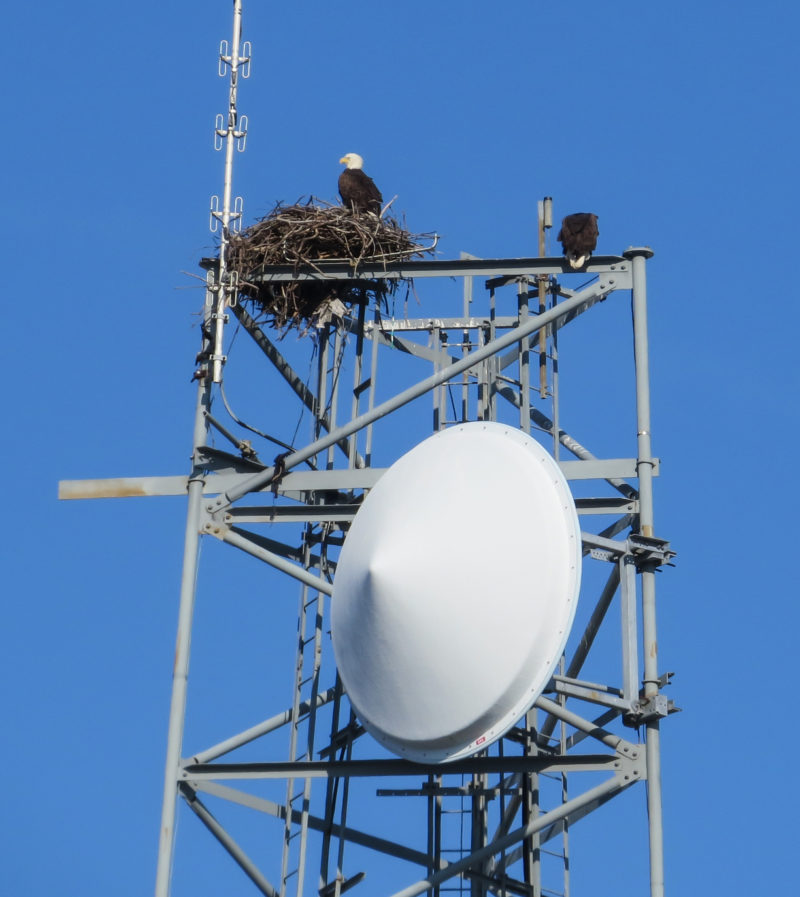
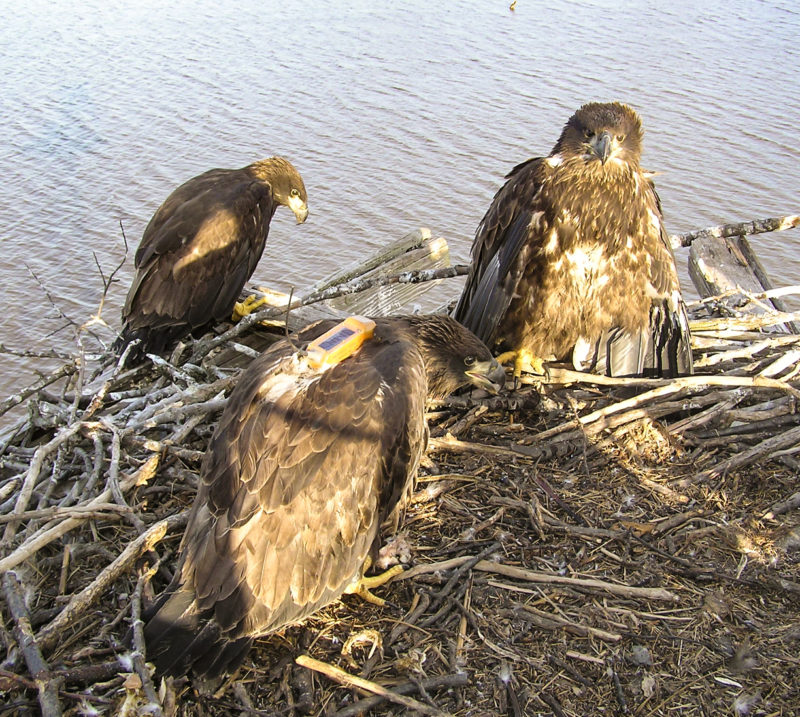
With the expansion of cell towers in the late 1990s and early 2000s we began to observe eagles adopting these structures for nesting. In many ways, cell towers are ideal nesting platforms. We have documented the use of cell towers mostly around urban centers like Baltimore, Washington, D.C., and Virginia Beach but have also had pairs using them in rural areas on the Eastern Shore and around the mouth of the Susquehanna. Given their availability, it is surprising that cell towers have not been adopted more widely.
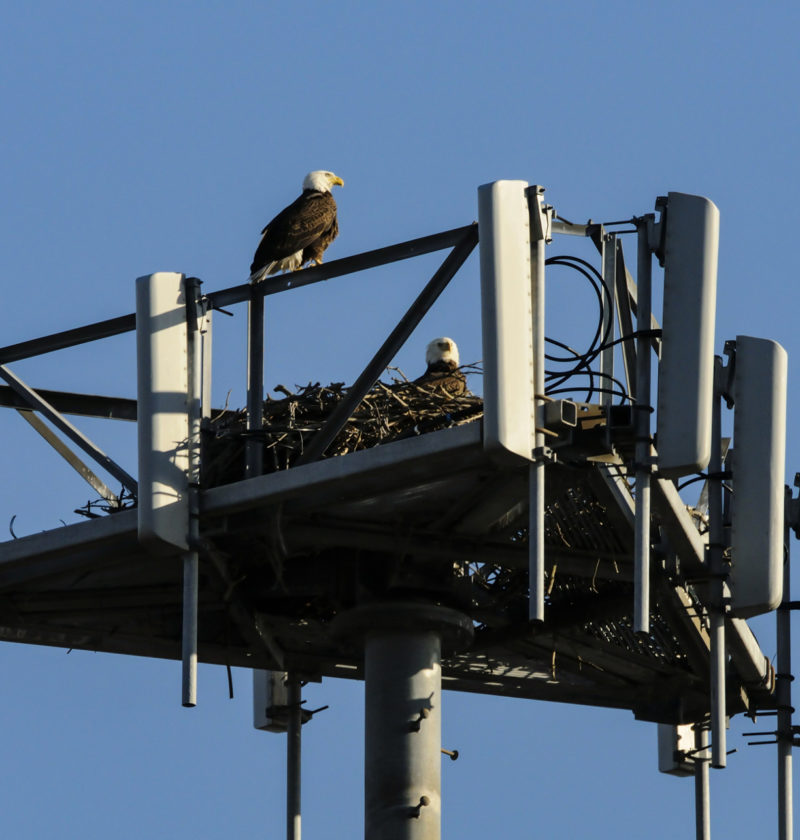
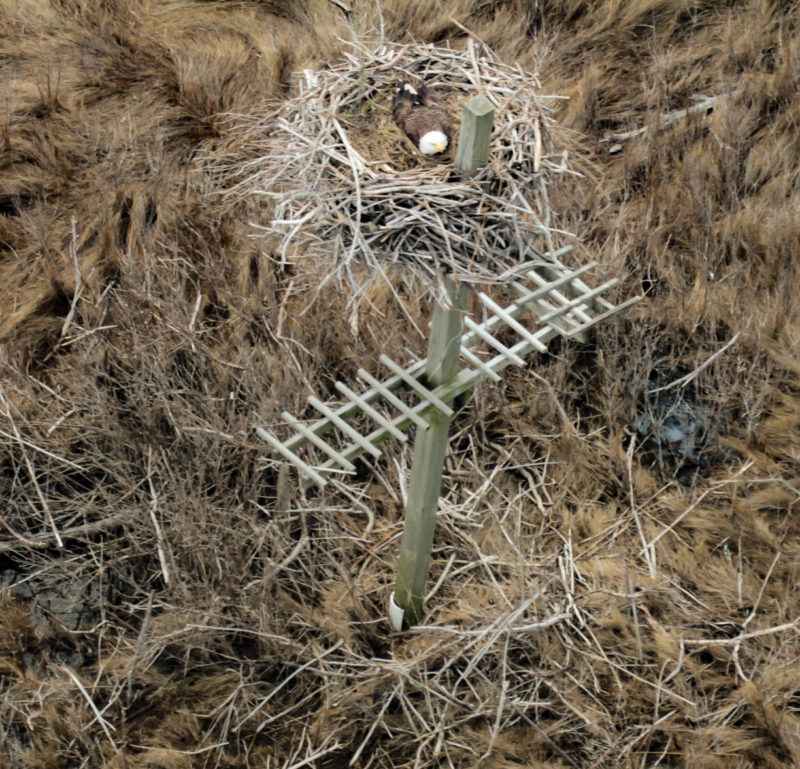
The most recent addition to the list of artificial nesting substrates for bald eagles has been low osprey platforms. Osprey nesting platforms have been used throughout the Chesapeake Bay since the late 1960s. Private citizens have erected thousands of these platforms along the Bay shoreline and they have proven to be a very effective management tool to encourage osprey nesting. We never anticipated that eagles would adopt these platforms because they are so low to the water and vulnerable to disturbance by boaters. During the 2020 nesting season we documented the use of three low osprey platforms by nesting eagles. One of the nests produced no young and the others produced one and two young. Moving forward, it will be interesting to see just how frequently eagles will adopt osprey platforms for nesting, and if they are able to adapt to other low structures, such as navigational light markers, which are very widespread throughout the Bay.

